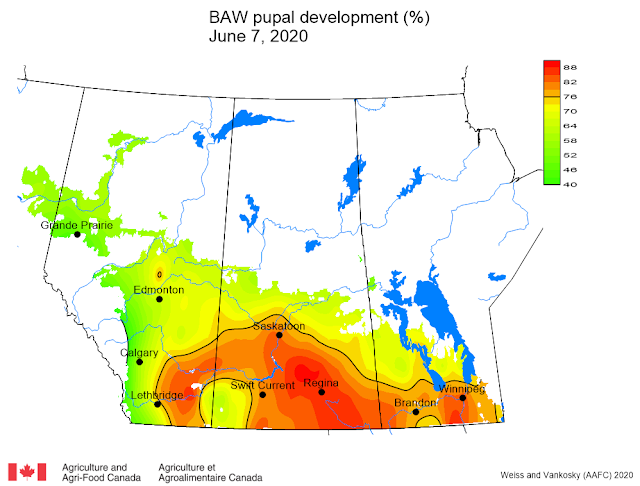As a reminder to cooperators monitoring BAW with pheromone traps, the traps should be placed in the field once pupal development in your region reaches 80% (Fig. 1).
 |
Figure 1. Predicted bertha armyworm (Mamestra configurata) pupal development across the Canadian prairies as of June 7, 2020. |
Recap - We again include last week's Table 1 with the earlier predicted BAW emergence dates.
Table 1. The estimated date on which bertha armyworm pupae will have completed 80% of pupal development and when adult moths are expected to begin emerging at six locations across western Canada.
Over the next weeks, watch your provincial monitoring networks who will weekly compile cumulative pheromone-baited traps in Alberta, Saskatchewan, and Manitoba.
Biological and monitoring information related to bertha armyworm in field crops is posted by the provinces of Manitoba, Saskatchewan, Alberta and the Prairie Pest Monitoring Network. Also refer to the bertha armyworm pages within the "Field Crop and Forage Pests and their Natural Enemies in Western Canada: Identification and management field guide" which is a free downloadable document as both an English-enhanced or French-enhanced version.
Refer to the PPMN Bertha armyworm monitoring protocol for help when performing in-field scouting. Use the images below (Fig. 3) to help identify egg masses and the economically important larvae in canola. Review the 2019 Insect of the Week which featured bertha armyworm and its doppelganger, the clover cutworm!

